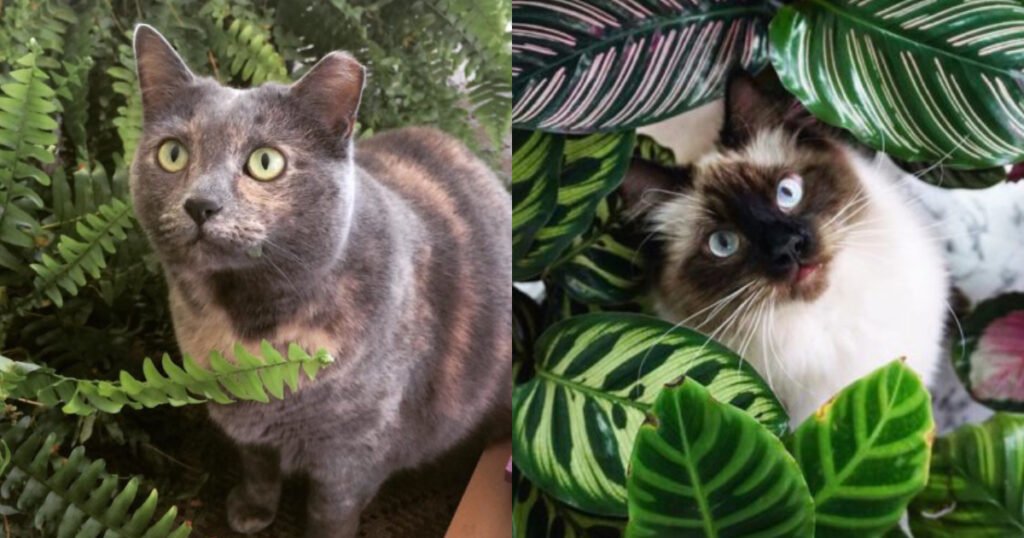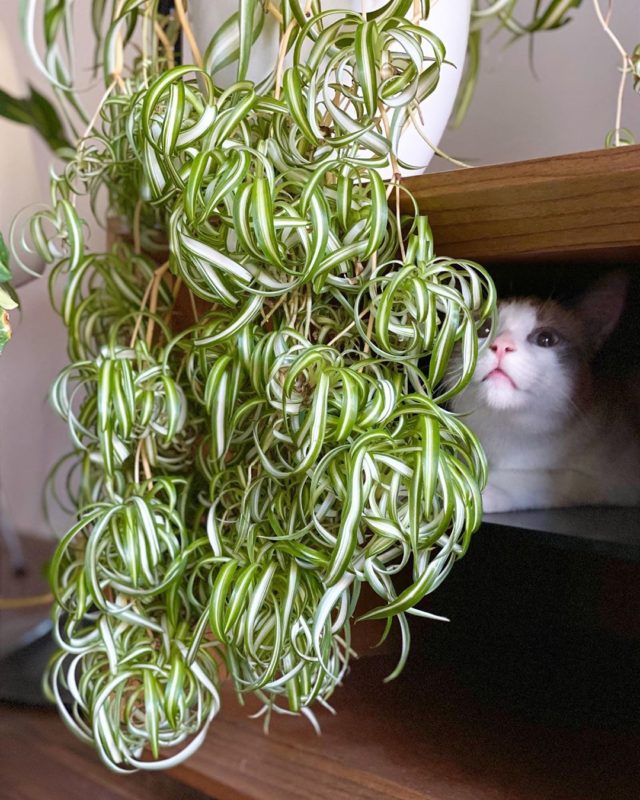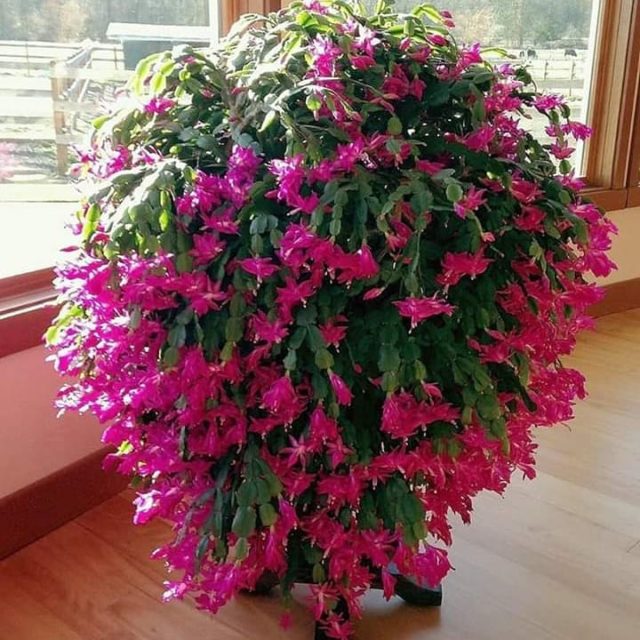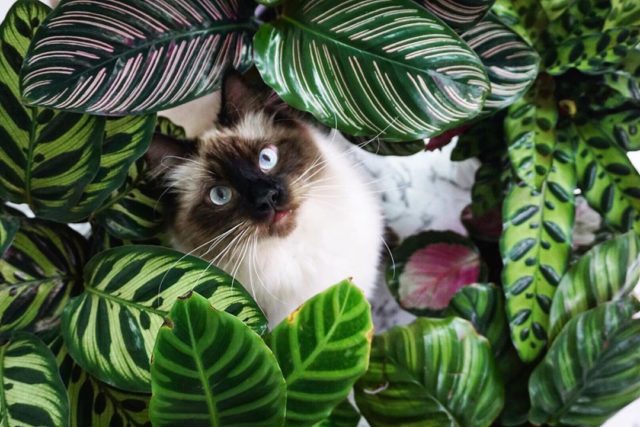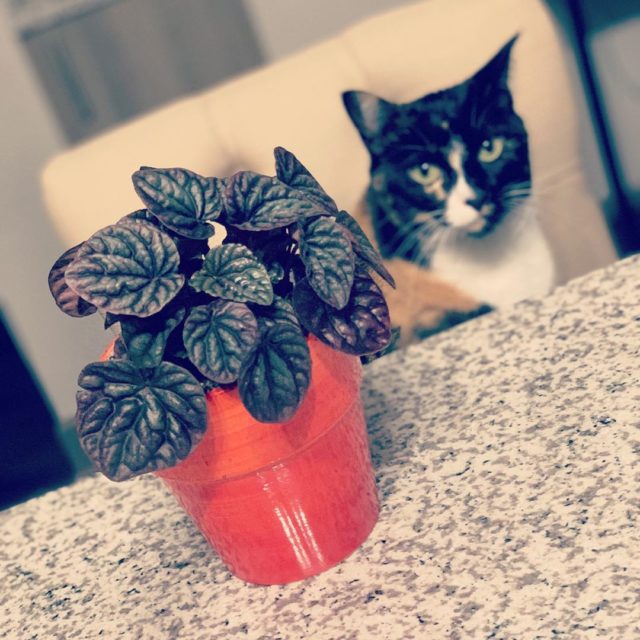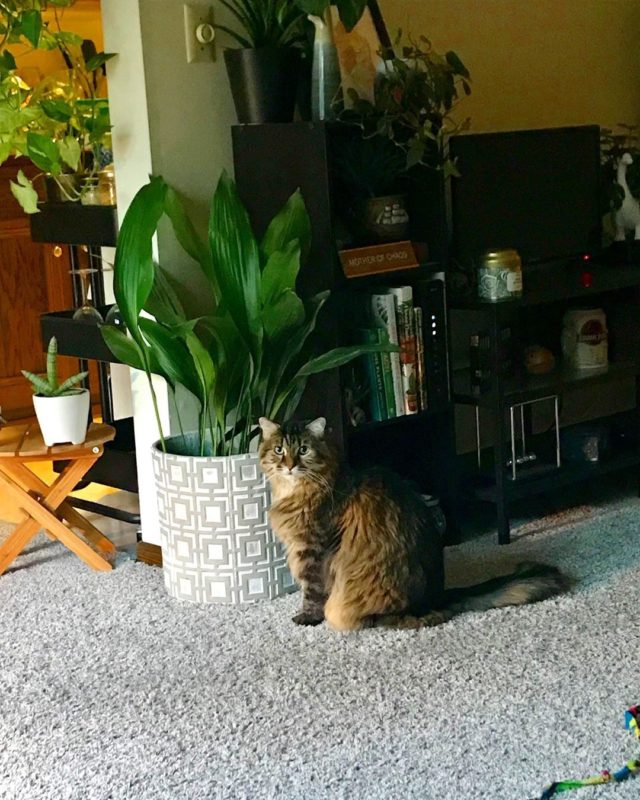For those whose feline friends enjoy playing jungle cat in houseplants, it’s crucial to have a variety of plants that are safe for cats. As cat lovers, we understand that cats like to touch and taste their surroundings, so having cat-safe houseplants is essential.
While this list of 12 cat-safe and 13 cat-toxic plants doesn’t encompass all plant species, the ones included here are common household plants that thrive indoors and are safe for cats to interact with.
For a comprehensive list of toxic and non-toxic plants, visit the ASPCA website. In the meantime, fill your home with these cat-safe houseplants and watch your cat enjoy their new jungle.
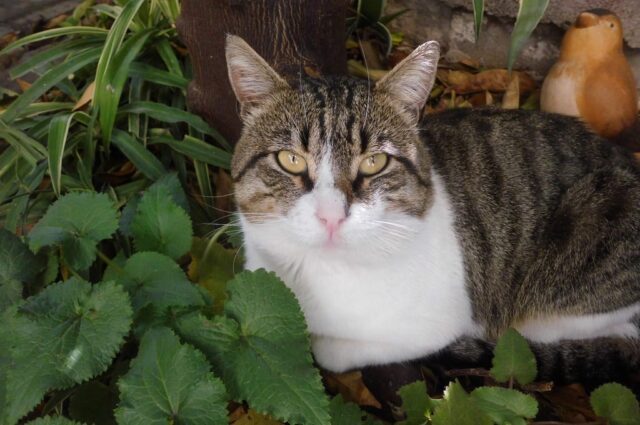
Cat Safe Houseplants
Parlor palm (Chamaedorea elegans)
The Parlor palm, popular in the Victorian era, is a cat-safe houseplant that thrives under indoor lighting and even responds to artificial light. They prefer humidity but be cautious of overwatering to avoid root rot. While caring for palms indoors can be tricky, it’s worth it for your cat to play jungle cat under this plant. Additionally, Parlor palms are known to purify the air in your home, according to a NASA study.
Areca palm (Dypsis lutescens)
Similar to the Parlor palm, the Areca palm thrives in bright but indirect sunlight. Be careful not to expose it to too much sun as the leaves can burn. This plant is particular about watering, preferring moist soil in the spring and summer and a drier pot in the fall and winter.
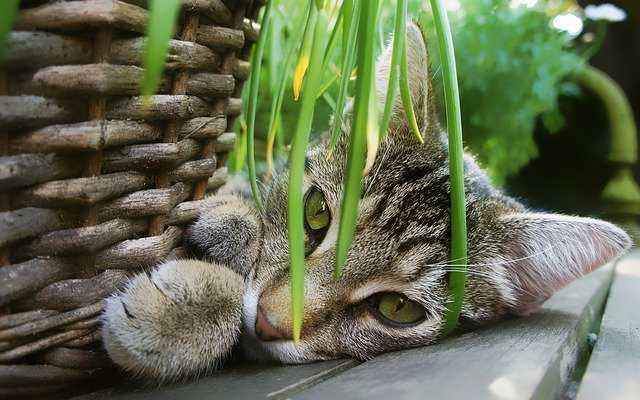
The wispy fronds of the Areca palm may attract your cat’s attention, so ensure the pot is stable and well-weighted to prevent tipping. While these palms are safe for cats, make sure your feline friend doesn’t destroy them!
Here are a few more palm varieties safe for cats:
- Ponytail palm
- Cat palm
- Majesty Palm
Spider plant (Chlorophytum comosum)
The fringy-fingered spider plant is a favorite among cats for its dangling babies that entice playful behavior. However, be cautious as spider plants can be hallucinogenic to cats, causing stomach issues. While not toxic, it’s best to keep them out of reach or hung up high.
Trim the plant if it’s overflowing the pot to prevent your cat from claiming it as their own. Spider plants are low-maintenance and tolerate low-light conditions. They are also known as NASA’s clean air plants.
Christmas Cactus (Schlumbergera)
Add a festive touch to your home with the unique blooms of the Christmas cactus. Your cat will enjoy the bright flowers, and if they nibble on the leaves, there’s no need to worry as the Christmas cactus is safe for cats. These cacti are easy to care for and can live indoors for 20-30 years.
Prayer Plant (Calathea)
With variegated leaves in green, white, or pink, prayer plants thrive in humid environments. These plants may be a bit finicky with watering, but their lush leaves are a visual delight for both you and your cat.
Radiator Plant (Peperomia)
Native to tropical regions, radiator plants thrive in warm, sunny environments. These compact plants are safe for cats and are ideal for indoor containers. Their small size may help prevent your cat from showing too much interest in them.
Cast Iron Plant (Aspidistra)
True to its name, the Cast Iron plant is nearly indestructible, making it a great choice for homes with curious cats. This plant thrives in low-light conditions and is drought-tolerant, perfect for those who may forget to water their plants.
Air plants (Tillandsia)
Air plants are unique plants that can grow without soil or water, attaching themselves to other plants or structures. While they don’t need soil, they do require a weekly soak and enjoy a misting. These plants thrive in bright but indirect light and are perfect for cats to bat around.
Cats enjoy playing with these spiky air plants, making them a fun addition to your home. Even though this houseplant is safe for cats, smaller ones could be tempting for a curious cat to nibble on, so be sure to keep them out of reach from your feline friend. following sentence:
The cat chased the mouse around the house.
The mouse was chased by the cat throughout the house.

